Explaining the layer system of Arctic expeditions
Layering system for clothing during winter expeditions
A so-called layer system for clothing during winter expeditions offers you optimal warmth when you go out in harsh conditions.
With a layer system for your clothing, you will always stay warm enough during arctic expeditions.
Choose low-rise underpants rather than athletic leggings
The first thing to put on is and boxer shorts or underpants.
Over that you wear long underpants. Preferably wear long underpants made of merino wool.
The Icebreaker or Woolpower brand is then highly recommended, however, there are many more brands available.
Long underpants are simply comfortable and also fit well.
It is good to know, however, that long underpants are not too tight during a Northern Lights trip or a husky safari.
So a pair of sports leggings is not a good option.
You need to make sure that blood flow through your body is always good, and you can’t always be sure of that with sports leggings.
Long underpants are always a bit looser and do fit well.
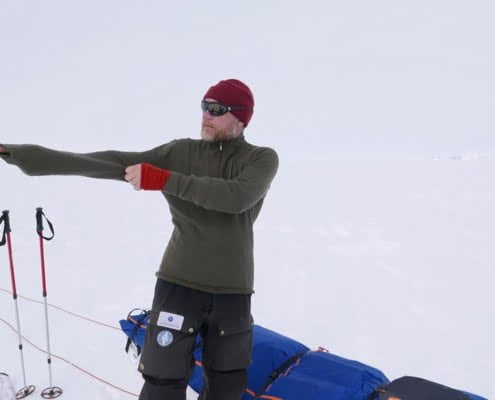
Preferably choose a shirt with a zipper to ventilate in heat
Furthermore, the first layer you wear is a shirt, a long shirt of also merino wool.
Preferably, this shirt has a zipper at the top.
Then, should it get warmer, you can always unzip the shirt a bit.
If it is just too cold, an expedition jacket and pants will suffice further.
If it is minus ten degrees and you are moving, it is so often perfectly tolerable and you get quite warm.
If it is colder you can opt for an extra sweater, preferably also made of fleece.
Preferably, again, choose a sweater with a zipper, this way you can ventilate fine should the need arise.
Make sure not to sweat, this can cause frostbite
If it is even colder, then you can opt for a jacket, a fleece jacket.
Of course, choose a jacket with a full zipper.
Unlike a sweater that you put on such a jacket a little easier.
So if it is really cold during the trip, it is better to opt for a jacket instead of an extra sweater.
Choose a fleece jacket with two pockets and on the side and a large and low zipper.
With a shirt and a jacket, you can get by just fine in eighty percent of cases.
The key, though, is to make sure you don’t sweat.
In fact, sweat can freeze and this can be accompanied by frostbite.
You want to avoid this during a trip to the Northern Lights.

Ventilating clothing during strenuous efforts
Sweating and paying attention to fit
The key is to stay comfortably cold during the colder expeditions, which means especially not sweating.
When choosing clothing for a trip to the Northern Lights or Heroes of Telemark, always pay close attention to fit as well.
So with the layer system, you wear relatively little clothing but still keep yourself warm in the only right way every time.
None of it has to be complicated at all, that way there is plenty of time to focus on the things that really matter; the Northern Lights trip!
Below you can read the transcript of the video recorded by Henk-Jan Geel about the expedition materials.
‘I want to tell you a little more about the layering system for your clothes.
The clothing to stay warm in Arctic conditions.
I brought a set here and I’ll walk you through the parts piece by piece.
I’m not going to talk about socks, gloves, mittens and face that I explained in other videos.
But I’m going to talk about the legs and your body itself.
First I have on boxer shorts, underpants and over that goes these.
Long underpants These are underpants made of merino wool.
This one is from the brand Icebreaker.
You have several brands I use Icebreaker.
I like the fit and it fits well.
Make sure with long underpants that they are not too tight so sports leggings are not good.
Sports leggings reduce the flow of blood through your body a bit.
But this one it fits well, but it’s also a little loose.
This is a bodyfit 260.
260 is then how thick it is.
I have these on as long underpants.
On my body, the first layer I have is this shirt.
A long shirt of, also of merino, from Icebreaker and the nice thing about this shirt I think is that it has a zipper at the top, so when it gets warmer I can unzip.
That is my first layer and on many days I actually only have these layers and then my jacket.
That’s all I need to stay warm.
You will find that when you are an arctic area, even it is minus 10, if you move and the sun is shining it is quite tolerable and it is actually quite warm.
Should it be a little colder I put this sweater over it.
This is a fleece just goes over the first layer.
I always have the first layer on, the fleece goes over it if necessary, and also with the fleece I have a zipper up to about here to provide just that extra bit of ventilation.
So this is the second layer I don’t have on often I think a little less than half the time I have this one on too.
Then, should it be even colder I have a fleece jacket which is this jacket, it has a full zipper and you can easily put it on quickly as opposed to a sweater which is just a little bit more difficult to put on so this is what I think about in the morning of is it really cold I need it but I could possibly still put this on during a break.
The regular fleece are few special things on it two pockets on the side and very large long zipper and for the rest it is purely a functional fleece this one I am wearing.
So that’s on the legs as a carpet pad and on my body.
And what else I have on the coat, which is another movie has already been completely explained.
I actually always have those on.
So on most days I have an undershirt and this jacket and probably if you watch the video you’re thinking, but this is very, very cold.
No it is not cold it is chilly.
What you want to avoid is sweating you don’t want to be too hot.
When you start sweating, your t-shirt gets damp.
The moment you then start to stand still that moisture that is going to take a lot of heat out of your body and then you get cold.
At worst the moisture is going to freeze and then you get all cold so you want to avoid sweating so it’s perfect to have it fresh in arctic environment always say comfortabaly cold or comfortably fresh.
You are always comfortably fresh not uncomfortably cold.
A shirt and a jacket, that’s more than enough for you in 80% of cases.
Optionally supplement with a fleece sweater or fleece jacket.
And then the pants, that’s also explained in another video that obviously goes over your legs, so there I just have a long under book and these pants and that’s more than enough.
You’ll notice that the legs, that you don’t get cold easily there if you get cold anywhere it’s your torso where you feel it and your fingers.
So get your hands in front of your torso.
The times I take a break a long break so not a short seven-minute break where you can stay warm, but if it’s longer breaks or it’s breaks at the end of the day when camp is set up then I put on a down jacket.
I’ll get that one in there this is a down coat.
And if you have a down coat make sure it can go over all your clothing layers.
So about, where do I have him, about the coat.
Because then you don’t have to take off your coat before you put on your down coat so you want to be able to put that down coat on over all the layers should you buy or rent a down coat make sure you actually have it one size bigger than you normally have.
Do you normally have medium? Take a down coat large, possibly extra large.
Don’t think about fashion and nice fit think about functionality.
So that over the layers the most important thing is so comfortably cold, stay fresh to the touch don’t sweat’
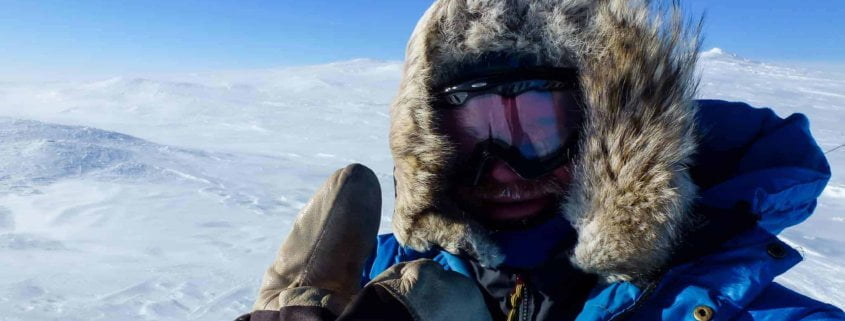
Henk-Jan Geel on the Hardangervidda during the heroes of telemark trip
Read more blogs about clothing for expeditions.
Or watch the videos on expedition materials.
But don’t want to miss anything. Then take a look at all personal equipment.

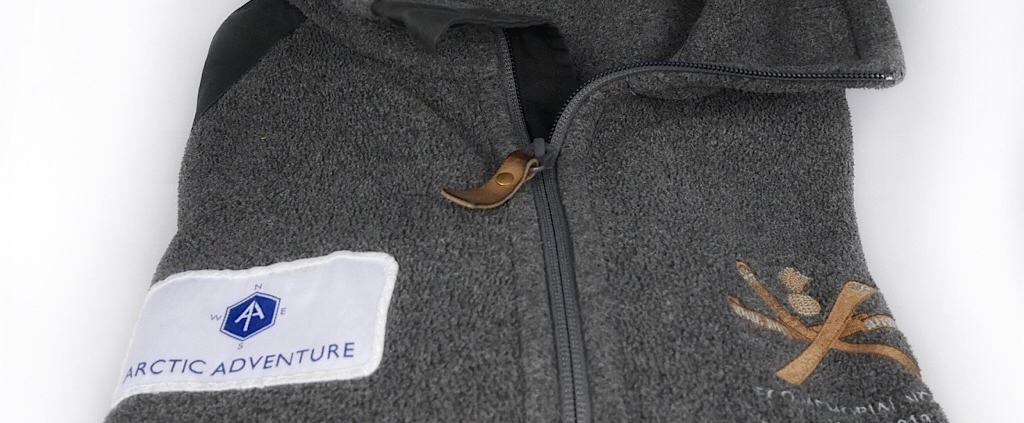


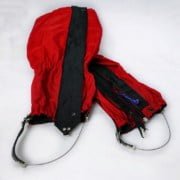
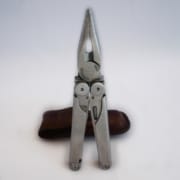
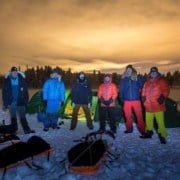










Leave a Reply
Want to join the discussion?Feel free to contribute!